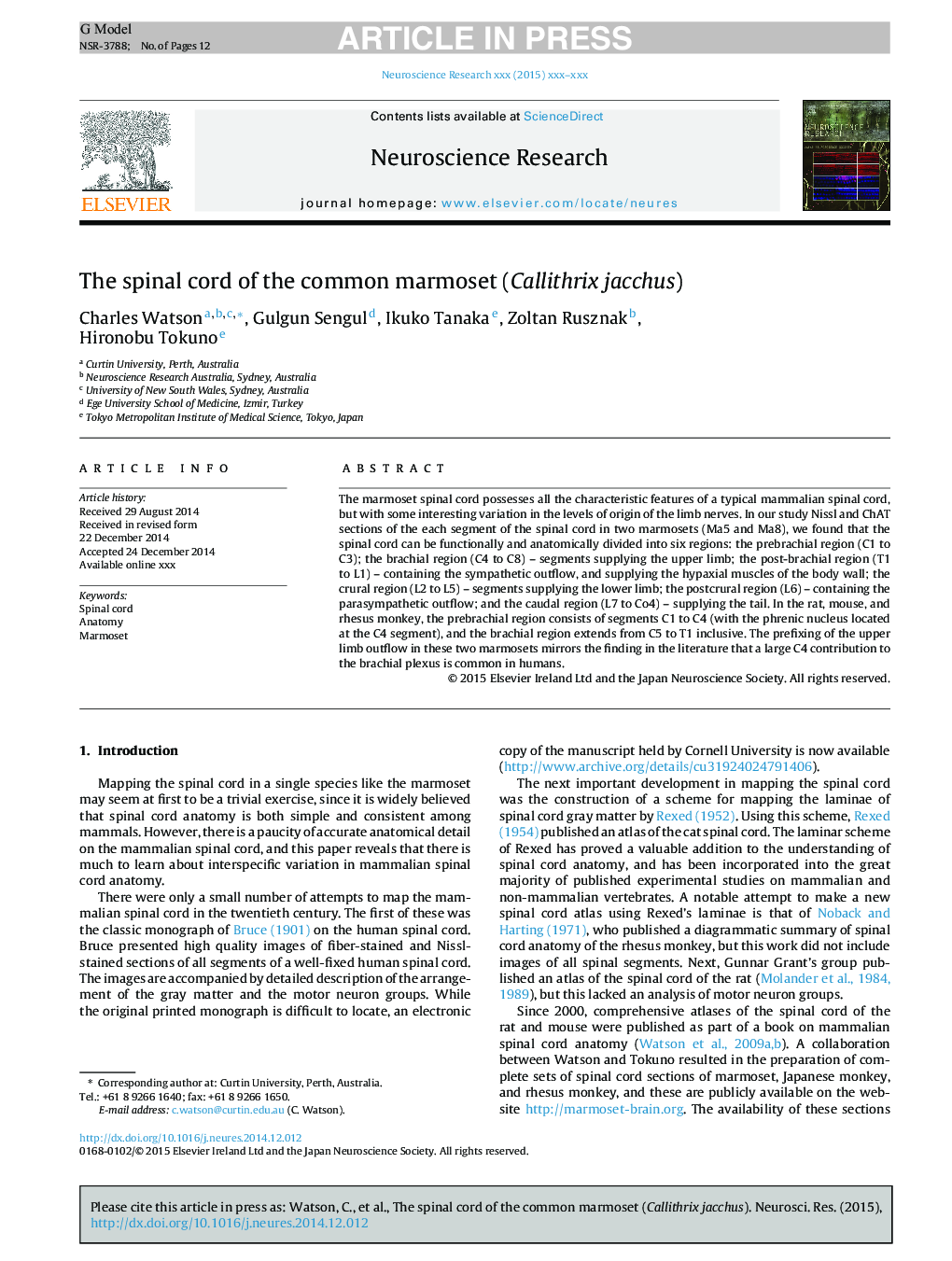| Article ID | Journal | Published Year | Pages | File Type |
|---|---|---|---|---|
| 6286153 | Neuroscience Research | 2015 | 12 Pages |
Abstract
The marmoset spinal cord possesses all the characteristic features of a typical mammalian spinal cord, but with some interesting variation in the levels of origin of the limb nerves. In our study Nissl and ChAT sections of the each segment of the spinal cord in two marmosets (Ma5 and Ma8), we found that the spinal cord can be functionally and anatomically divided into six regions: the prebrachial region (C1 to C3); the brachial region (C4 to C8) - segments supplying the upper limb; the post-brachial region (T1 to L1) - containing the sympathetic outflow, and supplying the hypaxial muscles of the body wall; the crural region (L2 to L5) - segments supplying the lower limb; the postcrural region (L6) - containing the parasympathetic outflow; and the caudal region (L7 to Co4) - supplying the tail. In the rat, mouse, and rhesus monkey, the prebrachial region consists of segments C1 to C4 (with the phrenic nucleus located at the C4 segment), and the brachial region extends from C5 to T1 inclusive. The prefixing of the upper limb outflow in these two marmosets mirrors the finding in the literature that a large C4 contribution to the brachial plexus is common in humans.
Keywords
Related Topics
Life Sciences
Neuroscience
Neuroscience (General)
Authors
Charles Watson, Gulgun Sengul, Ikuko Tanaka, Zoltan Rusznak, Hironobu Tokuno,
